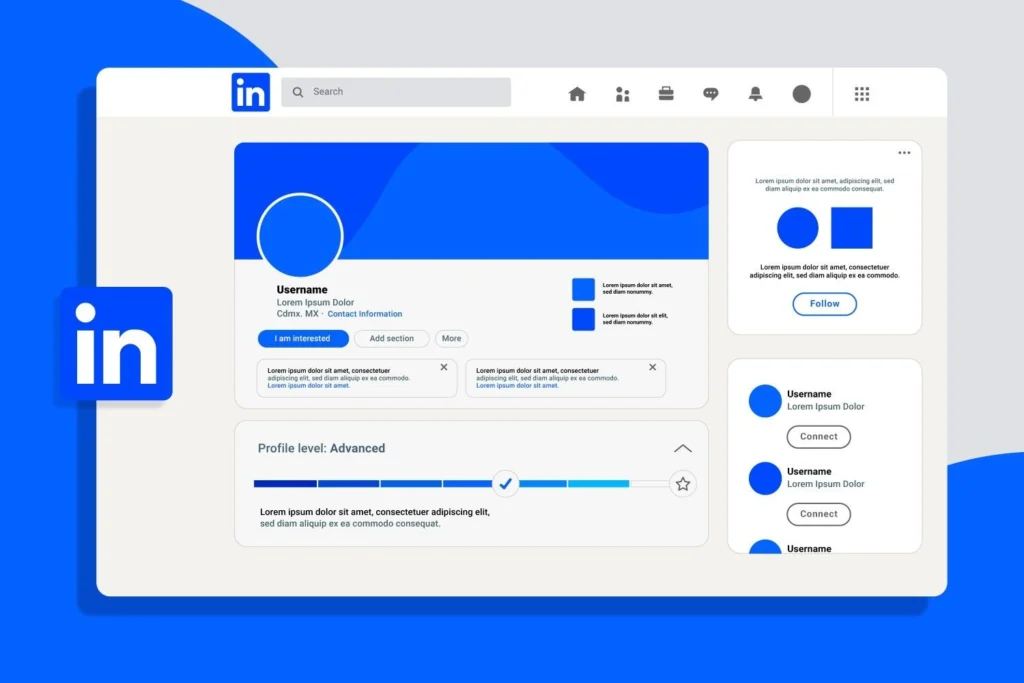Utilizing LinkedIn’s capabilities for marketing purposes is now necessary in the contemporary digital environment; it is no longer an option. Knowing how to create a LinkedIn marketing strategy can be crucial if you want to expand your professional network and interact with possible customers. This guide breaks down the steps you need to take to build a successful strategy that connects with your audience and drives meaningful connections.
Know Your Audience Inside Out
Understanding your audience is the foundation of any successful LinkedIn marketing strategy. You can’t communicate effectively unless you know who you’re talking to.
- Define Your Target Demographic: Think about the industries, job titles, and locations that align with your ideal customer. For example, if you’re targeting HR professionals, ensure your content speaks directly to their difficulties and interests.
- Create Audience Personas: Craft detailed personas representing your ideal clients. Include information about their goals, pain points, and where they hang out on LinkedIn. This practice helps in tailoring your messaging and content to meet their specific needs.
- Analyze Competitors: Keep an eye on what your competitors are doing on LinkedIn. Look at their follower engagement, the type of content they share, and how they interact with their audience. This will provide useful insights that you can incorporate into your own strategy.
Optimize Your LinkedIn Profile
Your LinkedIn profile serves as your digital business card. If you want to attract potential clients and partners, it’s crucial to optimize it for maximum impact.
- Use a Professional Profile Picture: Your profile picture is the first thing people notice. Choose a high-quality image that reflects your professionalism.
- Craft a Compelling Headline: Your headline should go beyond just your job title. Use this space to summarize what you do and the value you bring to your audience. Think of it as your elevator pitch.
- Write an Engaging Summary: Your summary is your opportunity to tell your story. Share your journey, what motivates you, and how you can help others. This personal touch will resonate with your audience.
- Highlight Skills and Achievements: Showcase relevant skills and encourage connections to endorse them. Highlighting your accomplishments adds credibility and makes you stand out.
Build a Strong Content Strategy
Content is the heartbeat of any LinkedIn marketing strategy. It’s how you engage your audience and provide value.
- Diversify Your Content Types: Mix it up! Share articles, infographics, videos, and polls. Different formats can appeal to different segments of your audience and keep your feed fresh and engaging.
- Focus on Value-Driven Content: Create content that educates and informs your audience. Share industry insights, tips, and how-tos that address the challenges your audience faces. This positions you as a thought leader and builds trust.
- Plan with a Content Calendar: Consistency is crucial. A content calendar helps you plan and schedule your posts. Aim to publish regularly—aim for at least a few times a week.
- Leverage LinkedIn Articles: Writing long-form articles can showcase your expertise. These articles can be shared widely, increasing your visibility on the platform.
Engage Meaningfully with Your Network
Engagement is vital for building relationships on LinkedIn. Here’s how to connect meaningfully with your network:
- Participate in Groups: Join groups related to your industry and actively participate. Sharing your insights and engaging in discussions can help you connect with like-minded professionals.
- Comment and Share: Don’t just post your content—engage with others’ posts too. Thoughtful comments can spark conversations and increase your visibility in your network.
- Utilize Direct Messaging: Use LinkedIn’s messaging feature to reach out to connections. A personalized message can go a long way in building relationships and can lead to meaningful conversations.
- Host Webinars or Live Events: Consider organizing webinars on topics that interest your audience. This not only positions you as an expert but also fosters real-time engagement with your network.
Make Use of LinkedIn Ads
If you’re serious about expanding your reach, consider incorporating LinkedIn ads into your strategy. LinkedIn offers a variety of ad formats that can help you target your ideal audience.
- Sponsored Content: This allows you to promote your posts to a wider audience. Choose content that has performed well organically for the best results.
- Direct Sponsored Content: This feature lets you create personalized ads that are not visible on your company page. Tailor these ads to specific audience segments for maximum impact.
- InMail and Text Ads: InMail allows you to send direct messages to users, while text ads appear on the sidebar. Both can effectively engage specific demographics and drive conversions.
Measure and Adjust Your Strategy
To know if your LinkedIn marketing strategy is working, you need to measure its success regularly.
- Leverage LinkedIn Analytics: Use LinkedIn’s analytics tools to track your engagement metrics, follower growth, and content performance. Key metrics include likes, shares, comments, and click-through rates.
- Set Clear Goals: Establish specific, measurable goals for your LinkedIn efforts. Whether it’s increasing brand awareness, generating leads, or driving traffic to your website, having clear objectives will guide your strategy.
- Iterate Based on Data: Use the insights you gain from analytics to refine your strategy. Don’t be afraid to experiment with different content types, posting schedules, and engagement tactics.
Conclusion
Creating a LinkedIn marketing strategy is not a one-time effort; it’s a continuous process that requires evaluation and adaptation. By understanding your audience, optimizing your profile, building a robust content strategy, engaging meaningfully, utilizing ads, and measuring success, you can effectively harness the potential of LinkedIn. This platform can be a powerful tool for networking, brand building, and lead generation.
As you embark on your journey to develop a successful LinkedIn marketing strategy, remember that authenticity and value are key. By focusing on these elements, you can build lasting relationships that will benefit your business for years to come.
Frequently Asked Questions
What is a LinkedIn marketing strategy?
A LinkedIn marketing strategy is a plan that outlines how businesses can use LinkedIn to reach their target audience, engage with them, and achieve marketing goals. It includes understanding your audience, optimizing your LinkedIn profile, creating valuable content, and leveraging LinkedIn’s advertising options.
How can I optimize my LinkedIn profile for marketing?
To optimize your LinkedIn profile for marketing, ensure you have a professional profile picture, a compelling headline, and a detailed summary that reflects your expertise and value proposition. Highlight your skills, showcase your achievements, and utilize the featured section to display important content that positions you as a thought leader in your industry.
What types of content should I share on LinkedIn?
You should share a variety of content types on LinkedIn, including articles, infographics, videos, and polls. Focus on providing valuable and informative content that addresses your audience’s challenges and interests. Engaging content can establish your authority and encourage interactions with your audience.
How can I measure the success of my LinkedIn marketing strategy?
You can measure the success of your LinkedIn marketing strategy by using LinkedIn’s analytics tools to track key metrics, such as engagement rates, follower growth, post performance, and click-through rates. Establish specific goals for your marketing efforts and regularly analyze your data to refine and improve your strategy.
Is it worth investing in LinkedIn ads for my business?
Yes, investing in LinkedIn ads can be worthwhile, especially for B2B businesses. LinkedIn offers various ad formats that allow you to target specific demographics effectively. Using sponsored content, InMail, and other advertising options can help expand your reach, increase brand awareness, and generate quality leads.




Pingback: LinkedIn Single Image Ads Best Practices - collected4u